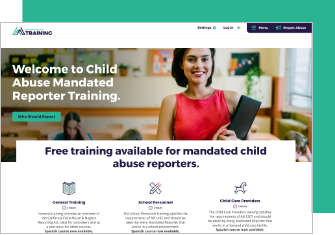rise of technology in the past decade has lead to different opportunities for people when it comes to learning and development. In a world more connected now than ever, it’s no surprise that online trainings have become popular.

Benefits of Technology-led Learning
Technology-led learning offers several advantages such as cost savings and convenience. Since learners can access courses virtually from anywhere, they don’t have to incur travel costs or take time off work to attend training. Online trainings also often offer the same content and quality as face-to-face learnings, and sometimes even include additional resources to provide an enhanced learning experience.
Apart from being financially beneficial, online learning is adaptive and easily accessible. People can quickly get up to speed with new skills or concepts through videos, tutorials, documents and other methods, which can provide flexibility compared to traditional classroom-style training.
Engaging Learners
Online trainings come with interactive elements that can help provide better engagement and improved learning outcomes. Activities such as quizzes and assessments can take place in the form of games or real-time competition between peers, providing an enjoyable way to learn.
A personalised approach to learning can be created by adding video tutorials, audio lessons and other visuals to the course. Such techniques simulate a more ‘in-person’ classroom environment, increasing the likelihood of learners absorbing what is being taught.
Importance of User Experience
For online trainings to be successful, user experience should be at the forefront of considerations. Designing with user experience in mind helps keep learners motivated and engaged while using the platform. This means understanding what type of content works best—it can vary from text-heavy to interactive videos. It also means making sure navigation is straightforward, so users can find what they need without being overwhelmed.
Usability testing and collecting feedback are essential components of ensuring a good user experience for an online training platform. Testing the software over different devices and environments can help ensure maximum usability, highlighting any issues before launching.
Integrating Technology and Training
The use of technology should be integrated with the goal of delivering training effectively. Tools such as virtual reality can be used in certain contexts to bring the learning experience alive. They can create simulated scenarios in a risk-free environment which encourages learners to think creatively on their feet.
Artificial intelligence can be employed to analyse behavioural patterns and track progress. AI powered learning can provide personalised content depending on the learner’s performance, resulting in highly tailored learning experiences.
The Future of Online Training
Currently, businesses are mostly using online training options as replacements for existing employee training programs, yet this needs to change as the industry evolves. Until now, most of the focus has been on creating content, however, providing meaningful experiences is key to success. The design principle should be around customizing the learning process to match users’ personalities and goals, rather than simply replicating existing training methods.
With new advances in technology such as augmented reality, natural language processing, and more, the possibilities for the future of online training are limitless.
